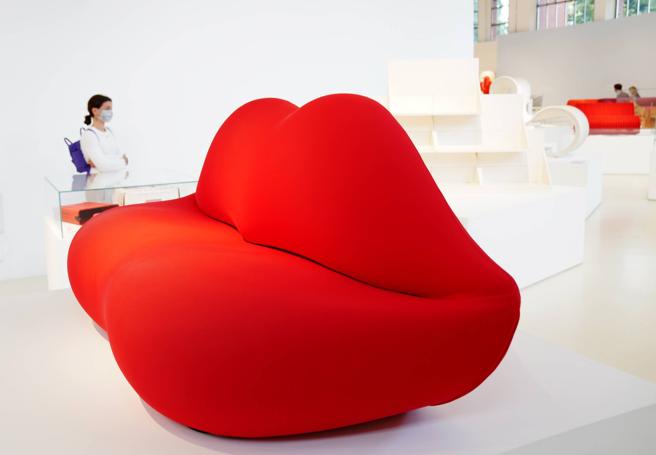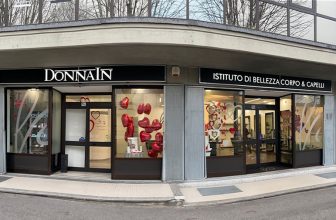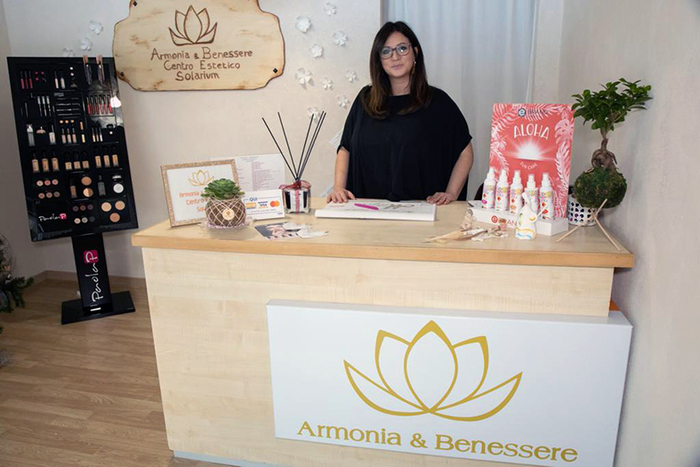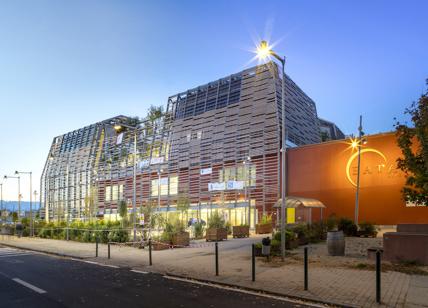Design Economy 2020: "Italy a world leader, design increases the competitiveness of the production system"

Italy among the European leaders of Design, a sector between artistic creation and industrial mass production. In fact, if the design sector in Europe has a number of about 217 thousand companies, Italy is the country with the largest number of companies in this area (34,000 thousand), which offer employment to 64,551 workers and generate an added value greater than 3 billion euros. Our country in fact contributes to 14.8% of the turnover at EU level, behind the United Kingdom and Germany. However, the 53.4% of our entrepreneurial fabric is fragmented between freelancers and very small businesses. These are the main indications that emerge from the "Design Economy 2020" report, prepared by the Symbola Foundation, Deloitte Private and POLI.design (starting this year with the support of ADI, CUID and Comieco and the patronage of the Ministry of Foreign Affairs). The aim of the study is to raise awareness of the value of design for the competitiveness of the national production system. Companies that invested in design and green economy in 2019 are more competitive in terms of turnover, employees and exports.
The level of fragmentation explains why, despite a record in terms of number of companies, Germany and the United Kingdom record a level of employment and a turnover higher than the Italian ones. In fact, all EU countries recorded a sales volume of 27.5 billion euros, and Italy alone feeds 14.8%, in third position behind the United Kingdom (24.5%) and Germany ( 16.4%), but largely ahead of France (9.2%) and Spain (4.6%). The Italian industrial sectors that make greater use of Design are: furniture wood, clothing and automotive. In Italy, the gap between micro and large companies is deep: freelancers and micro-enterprises (less than 100 thousand euros in turnover) still account for more than half of employment (53.4%), while companies with a turnover of more than 5 million euro have an employment incidence of 8.4%. In our country, therefore, most of the companies are located in the small and micro business segments.
The link between Made in Italy and Design
The results of the Symbola Foundation, Deloitte Private and POLI.design report confirm a strong territorial link between Design and the Made in Italy supply chains, with strong repercussions in terms of competitiveness, innovation and business culture. The Marche is the Italian region with the highest levels of design specialization in the furniture and footwear supply chains. Followed by Friuli-Venezia Giulia, Emilia-Romagna and Veneto, where there are many design companies linked to Fashion, mechanics, up to ceramics and furniture. In general, the distribution of companies appears to be concentrated in favor of metropolitan systems: Milan alone absorbs a share of companies equal to 14.5% of the national total, while Rome is the second province in the ranking (6.5%); Turin follows, third, with a share of 5.2%. The first four metropolitan provinces in the ranking aggregate around 36% of the wealth produced by design in Italy, attracting the majority of design companies and professionals. Milan confirms itself as the capital of Design.
The main capital of Italian design is Milan: the Lombard capital is capable of concentrating 18.3% of the total output of the sector on the national territory, while Turin and Rome, second and third respectively, account for 8.0% and 5.3%. Also on the employment front, Milan counts about 14% of the total number of employees. The primacy of Milan is not accidental: two of the most important design collections in the world are located here, that of the Milan Triennale and that of the Compasso d'Oro Museum promoted by ADI, which will be inaugurated by 2020. Milan is also home since 1961 of the Salone del Mobile and Fuorisalone, one of the largest events in the world dedicated to design. In second position is Turin, which in 2014 received the nomination of UNESCO Creative City for Design by UNESCO. Events such as Torino City of Design and the presence of major names in automobile design stand out in the Turin area. Rome's interest in Design also grows thanks to the link with the fashion sector and the initiatives promoted by Altaroma and Roman Fashionweek.
The impact of Covid-19 on designers' operations Interviewed on the consequences of the Covid-19 health emergency on their operations, the 45% of freelancers declared that they had never stopped their activity, as it is strongly oriented to the use of digital technologies. However, almost all the designers interviewed found economic difficulties linked to a decrease in demand (68.2%) and liquidity problems (48.3%). The Covid-19 emergency had an impact on turnover volumes for 39.7% of designers, with 23.8% of respondents reporting a decline of more than half in revenues in the same period of the previous year. The disruption caused by the spread of Covid-19 can however translate into opportunities: the stringent rules of social distancing and the limits to mobility to contain the risk of contagion, could lead to the redesign of public and private spaces in numerous areas: catering (16,6%) , public administration (11.9%), home working (7.3%) and healthcare (6.0%).
Design and sustainability driving growth From a sample survey by the Symbola Foundation and Unioncamere on about 3 thousand manufacturing companies, a close correlation emerged between investments in Design and growth along three lines: turnover, employees, exports. The role of design as a driver of competitiveness, confirmed by the companies that use design interviewed in this edition of the Design Economy study, appears even more marked in the presence of a corporate attention to environmental sustainability: green and design oriented companies show performance differentials significant compared to other companies. The advantage in favor of companies that invest simultaneously in green technologies and design, compared to the rest of the sample, reaches 22.6 percentage points in terms of employees (38.6% against 16.0%), 25.1 points in terms of turnover (48.0% vs 22.9%) and 13.5 points in relation to exports (38.6% vs 25.1%).
Ermete Realacci, president of the Symbola Foundation, commented: «An economy more on a human scale needs a design that combines beauty, technology, empathy and assumes the frontier of the green economy and the circular economy. Italy is already a protagonist of this design and can therefore be a candidate to be a reference point for the new Bauhaus for the Green New Deal proposed by the President of the European Commission, Ursula von der Leyen. A sustainability-oriented economy is advancing in Europe and in the world that leaves no one behind and is therefore more capable of facing the future. And it makes businesses more competitive ». Ernesto Lanzillo, Deloitte Private Leader for Italy, commented: "Design represents an engine of innovation and competitiveness for Italian companies, especially in areas where it is necessary to draw new horizons, such as for sustainability, and in contexts of profound transformations as for the pandemic, as it makes companies more resilient, able to dynamically adapt to change and re-imagine their place in the market. It is therefore necessary to increase awareness in the industry of the strategic value of design, not only linked to aspects of product or service conception and presentation, but to those of continuous evolution of corporate functions and strategies, which differentiate Made in Italy in the markets. international and contribute to the resilience of micro and small medium enterprises in a socio-economic context of constant change.
Francesco Zurlo, President of POLI.design and Deputy Dean at the School of Design, Department of Design, Politecnico di Milano: «The learning process of companies on the role of design in making the country system competitive and sustainable is increasingly evident. Beyond the traditional idea of design - that is, the beautiful and well-made product - we realize that it is increasingly considered a real strategic asset. In fact, there is a progressive integration of design skills and abilities in organizations, institutions and society, with the initiation of a direct dialogue with the decision makers of this system. Design scales the organization chart, today, because it focuses on the person to push and push - in a responsible way - towards a more "nature" centered dimension, attentive not only to the user, but also to society, culture, economy and the environment ". Italian training in the design field Although with many differences and characterizations, the Italian design training system is an excellence that counts as many as 18 universities, 15 academies of fine arts, 15 legally recognized academies, and 11 private institutes authorized to issue AFAM and 6 ISIA, for a total of 242 courses of study distributed in various training levels and different areas of specialization (Product, Communication, Fashion, Space). Overall, 8,244 designers are trained, of which 3,822 in universities and 4,422 units in the AFAM sector. It can be observed that an increasing number of students choose Legally Recognized Academies and private Institutes authorized to issue AFAM qualifications. Most of the three-year degree courses are limited in number, with a number of enrollments for the entrance test of approximately 13,000 questions, which exceeds the approximately 3,300 places available by four times. The multiplication of the training offer and the high number of applications for registration compared to the available places and the continuous expansion of the professional fields of the designer, if on the one hand they decree the success of the national training offer, on the other they make it necessary to reflect on boundaries, specificity and quality of teaching. Approximately 70% of students obtained a bachelor's degree or a I level academic diploma, while the 21,3% deepened their studies by obtaining a master's degree or a II level academic diploma, finally only the 8,7% completed their training with I or II level masters. The peculiarity of Italian design is the ability to create synergies with the production needs of the territories: while the training offer of the three-year period is substantially homogeneous in all Italian universities, the master's degree courses offer a marked specialization linked to the productive vocation of the various geographical areas. The most active region in the training of designers is Lombardy, which alone absorbs almost 49.5% of the outgoing human capital from the Italian training system for the world of design. In particular, Milan is confirmed as the Italian city of design with 3,675 graduates / graduates. Following Piedmont (9.8%) and Lazio (8.3%) reaffirm the link between training, design and the production needs of the regions, driven by the cities of Turin and Rome. At the level of individual institutions, the Politecnico di Milano ranks firmly at the top of the ranking by number of graduates and confirms its excellence in the international arena, successfully consolidating its 3rd place in Europe and 6th in the world in the QS World ranking University Rankings by Subject for design, first among public universities. This is also thanks to its Design system, which includes POLI.design, the School of Design and the Department of Design - an aggregate of resources, skills, structures and laboratories, among the most important in the world. Afterwards Nuova Accademia di Belle Arti (NABA) and IED maintain an important role in the training of designers.
Copyright © | corriere.it







